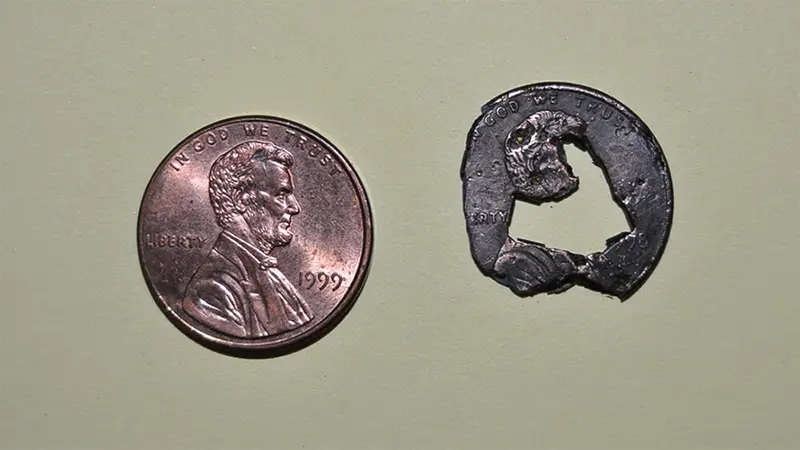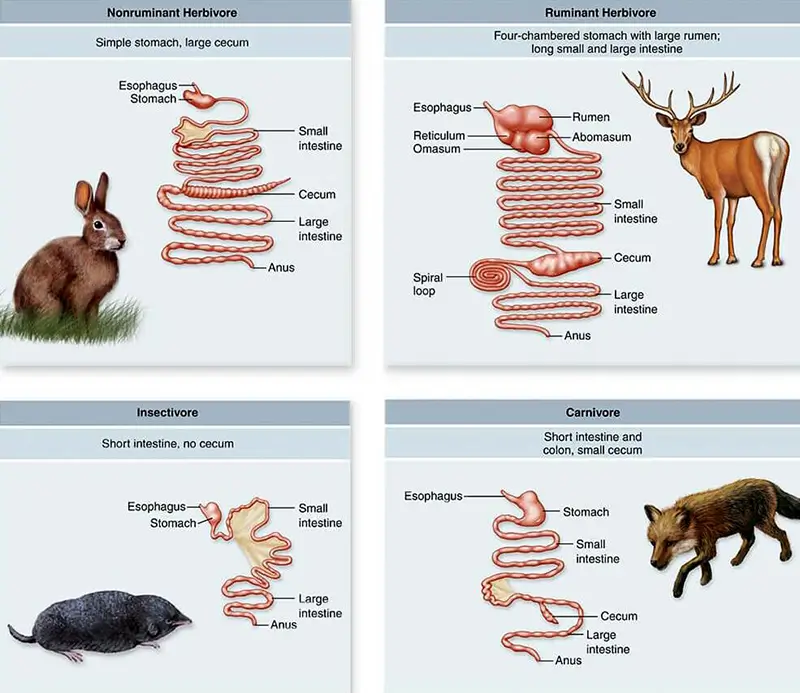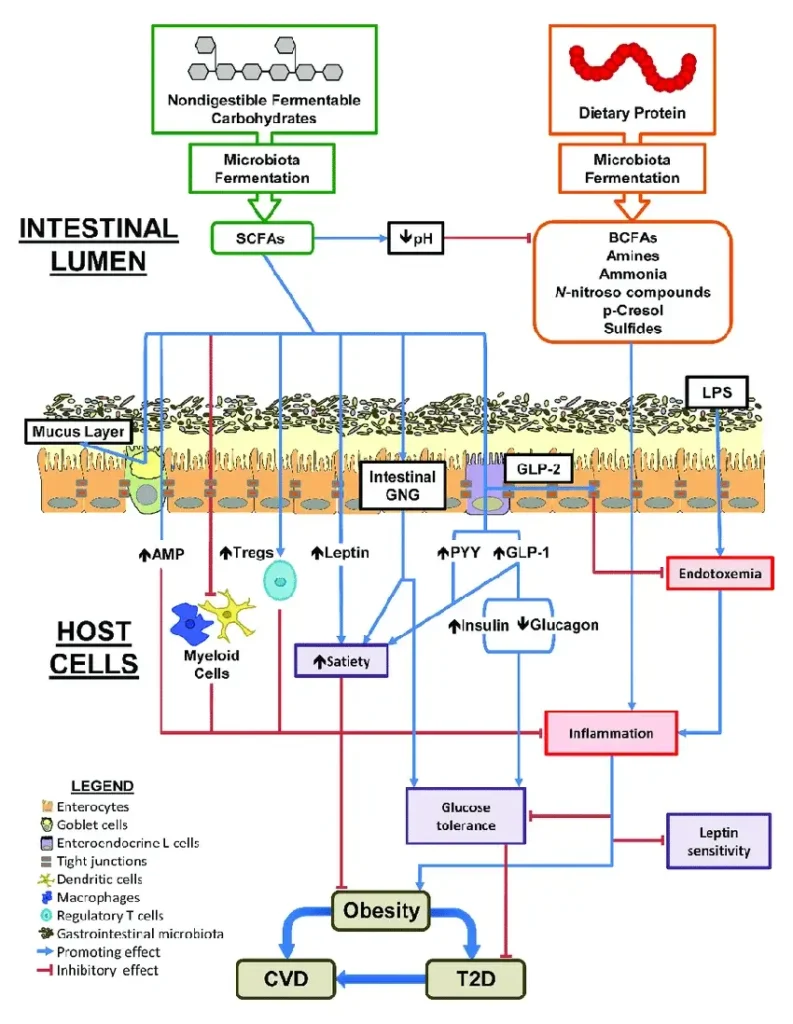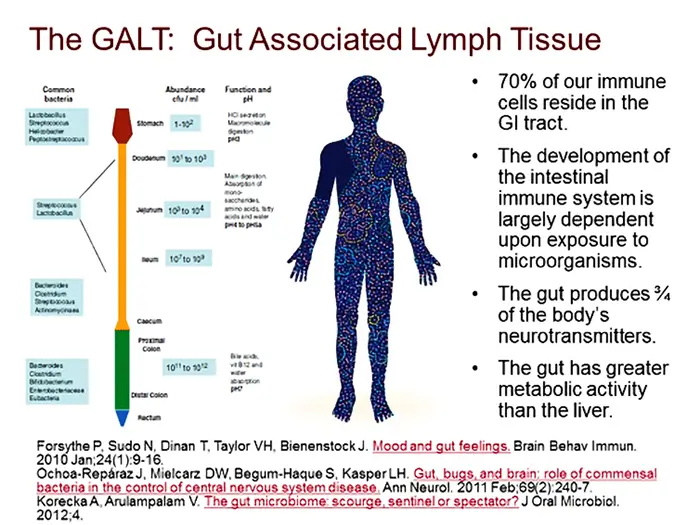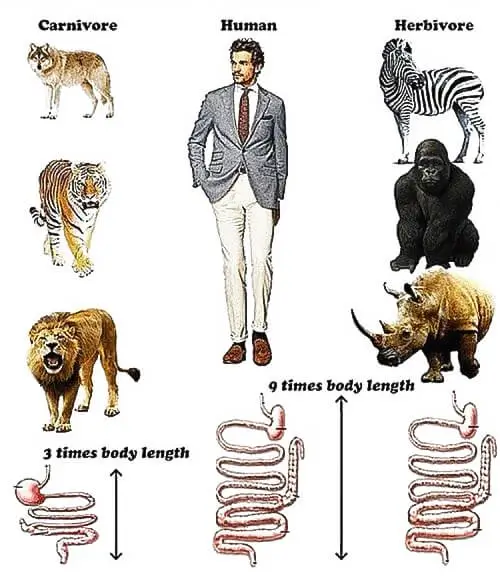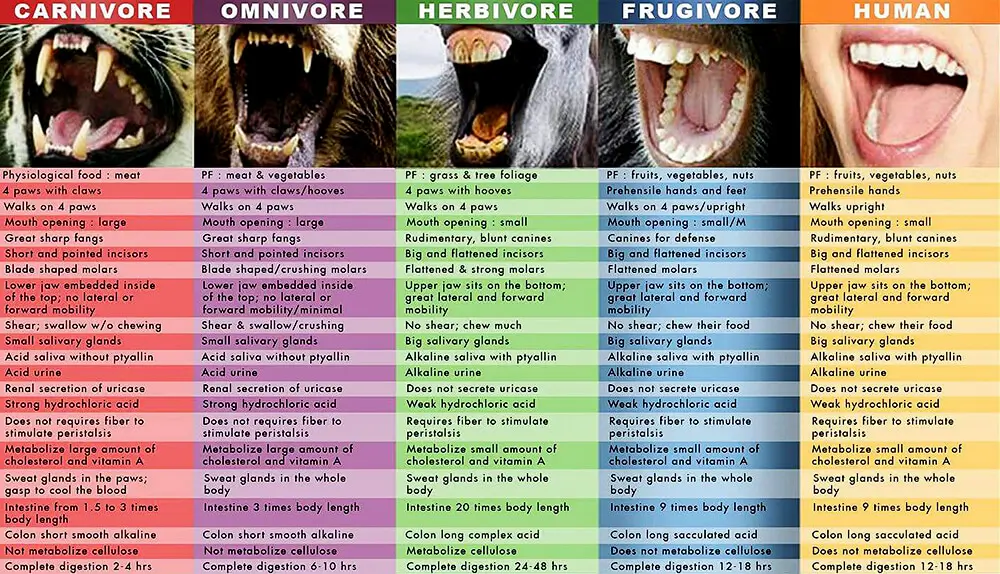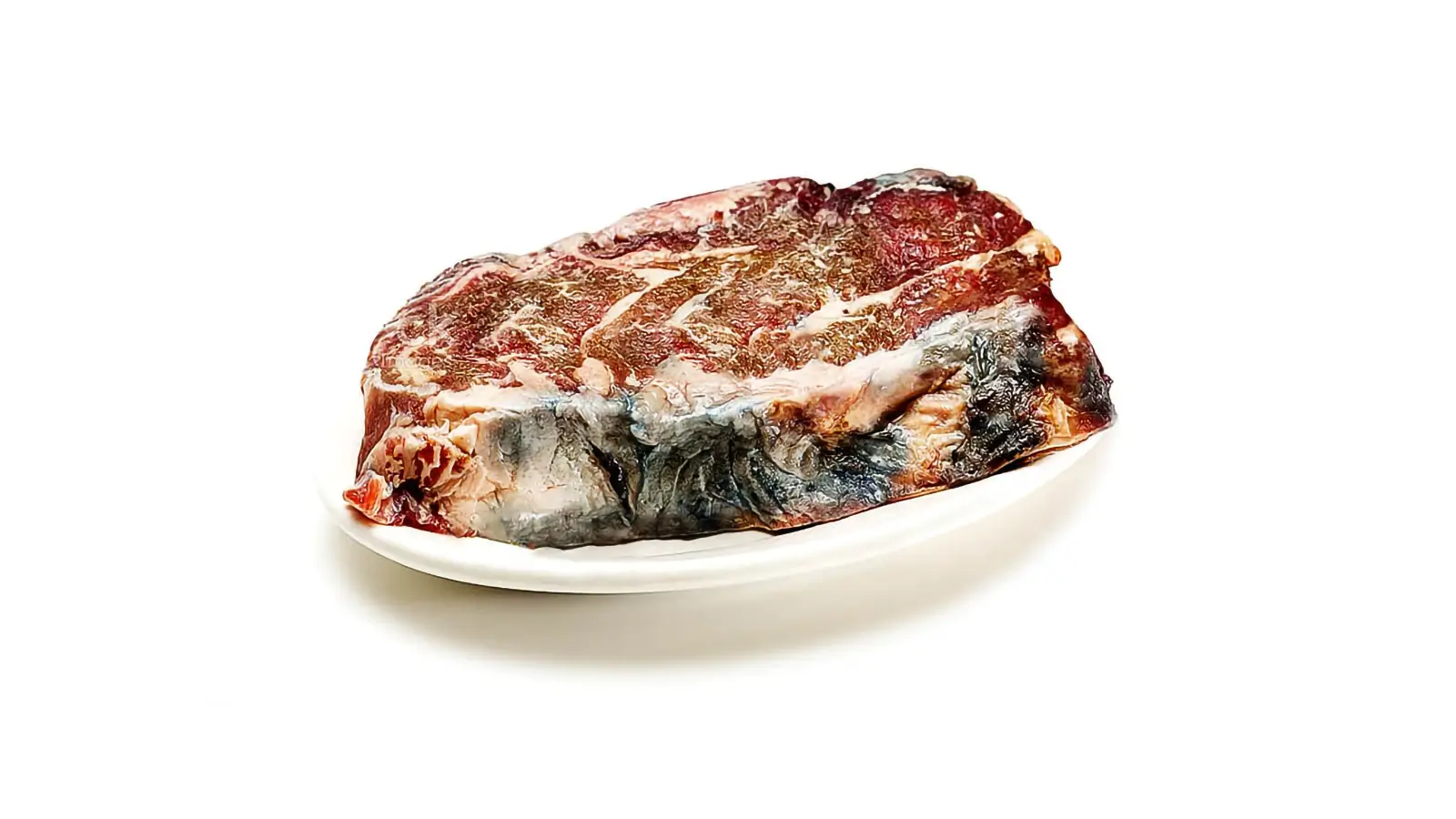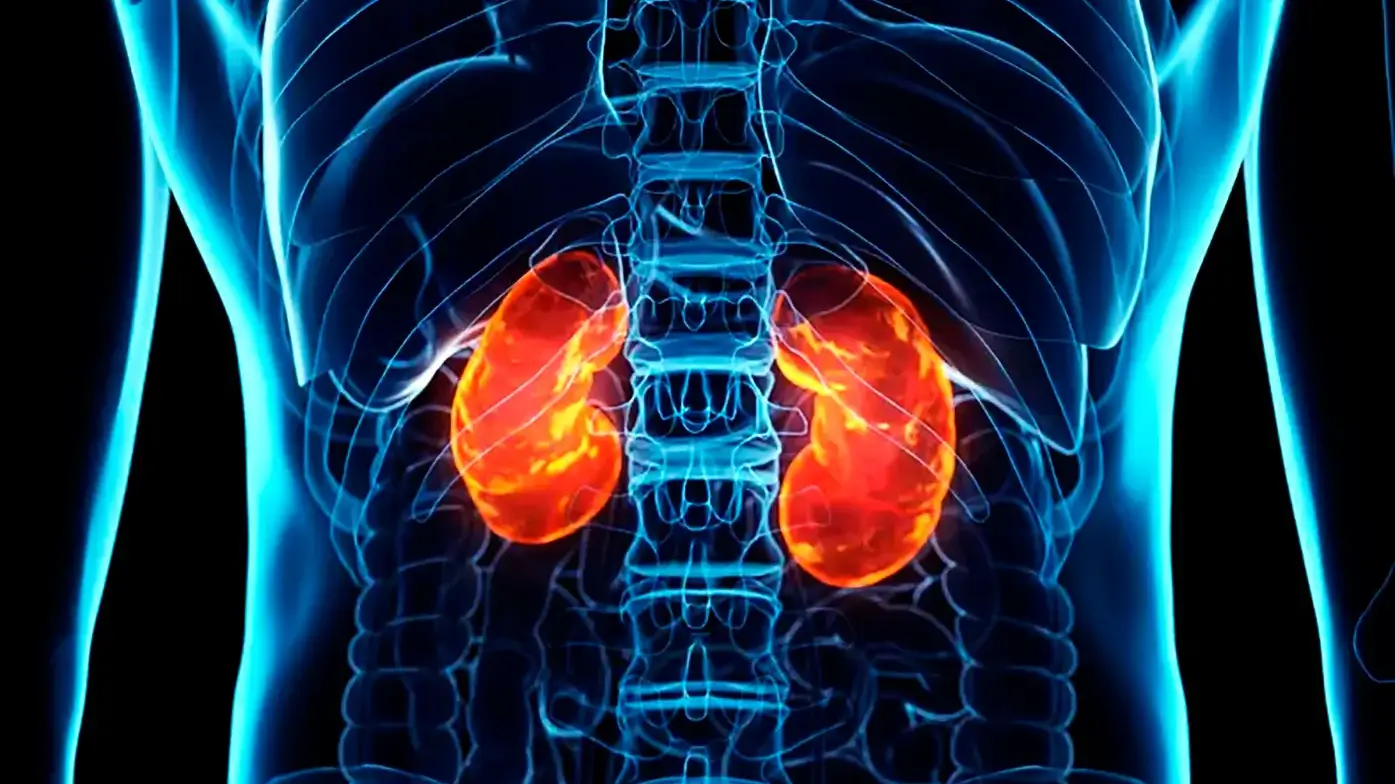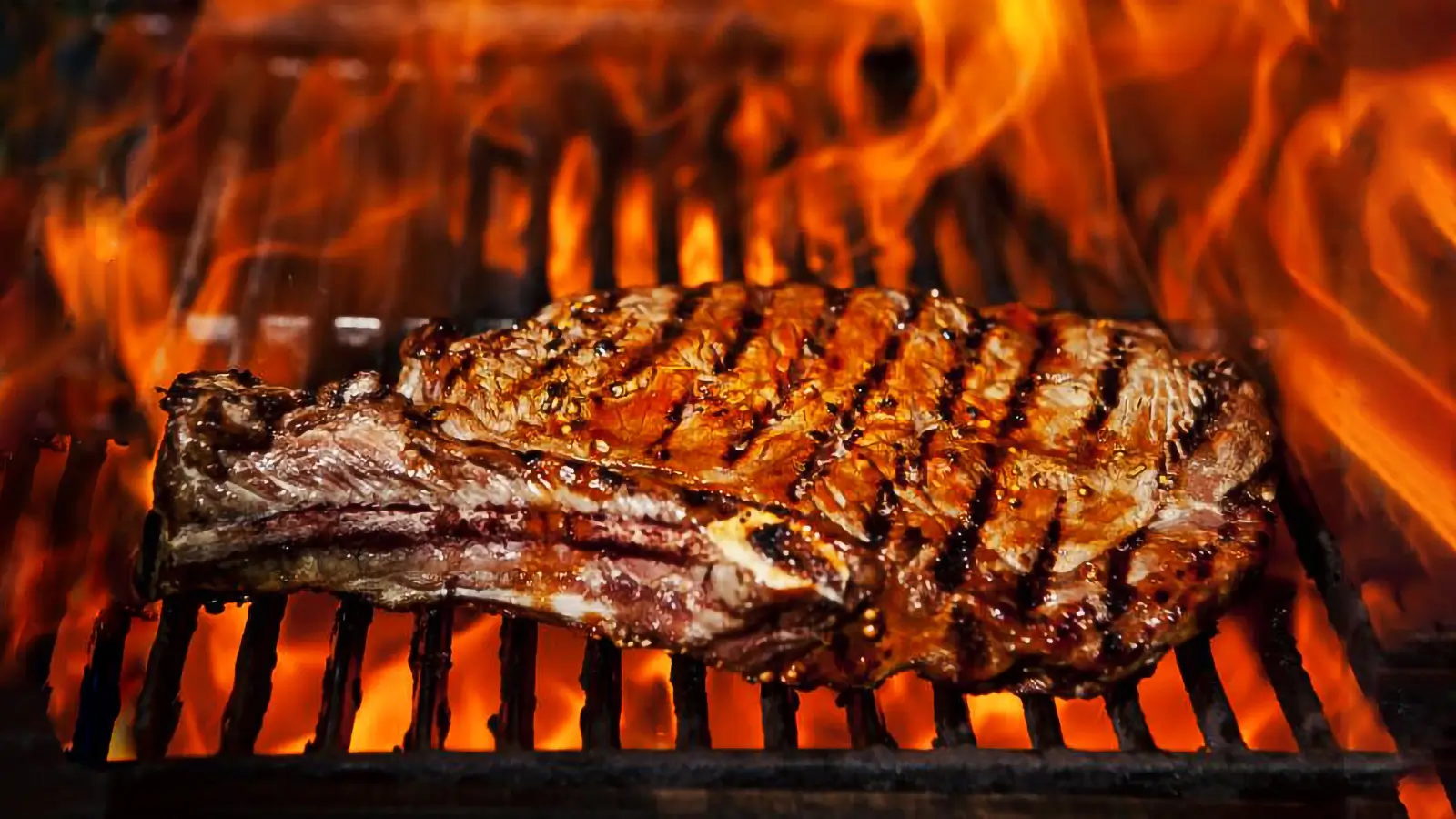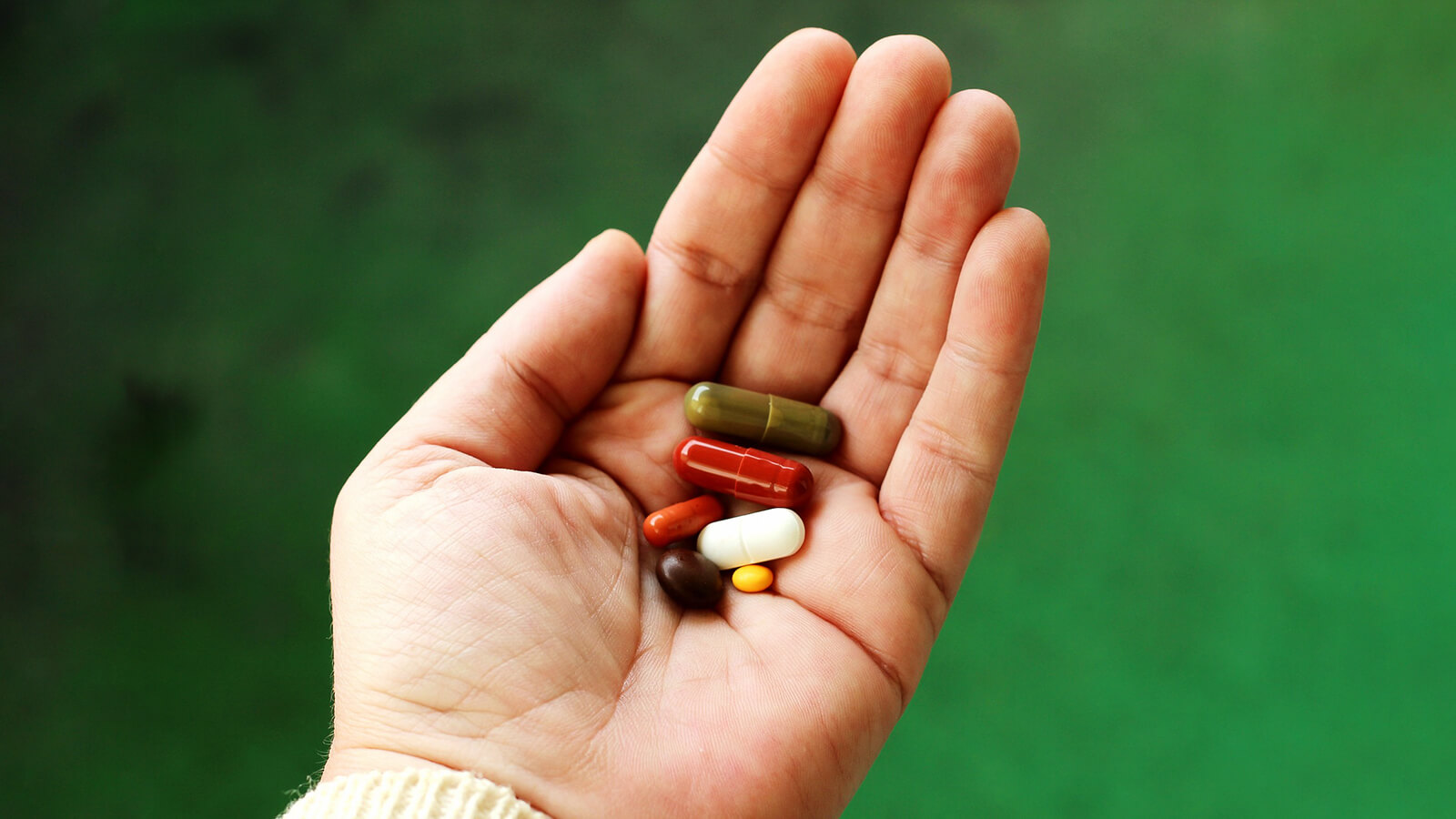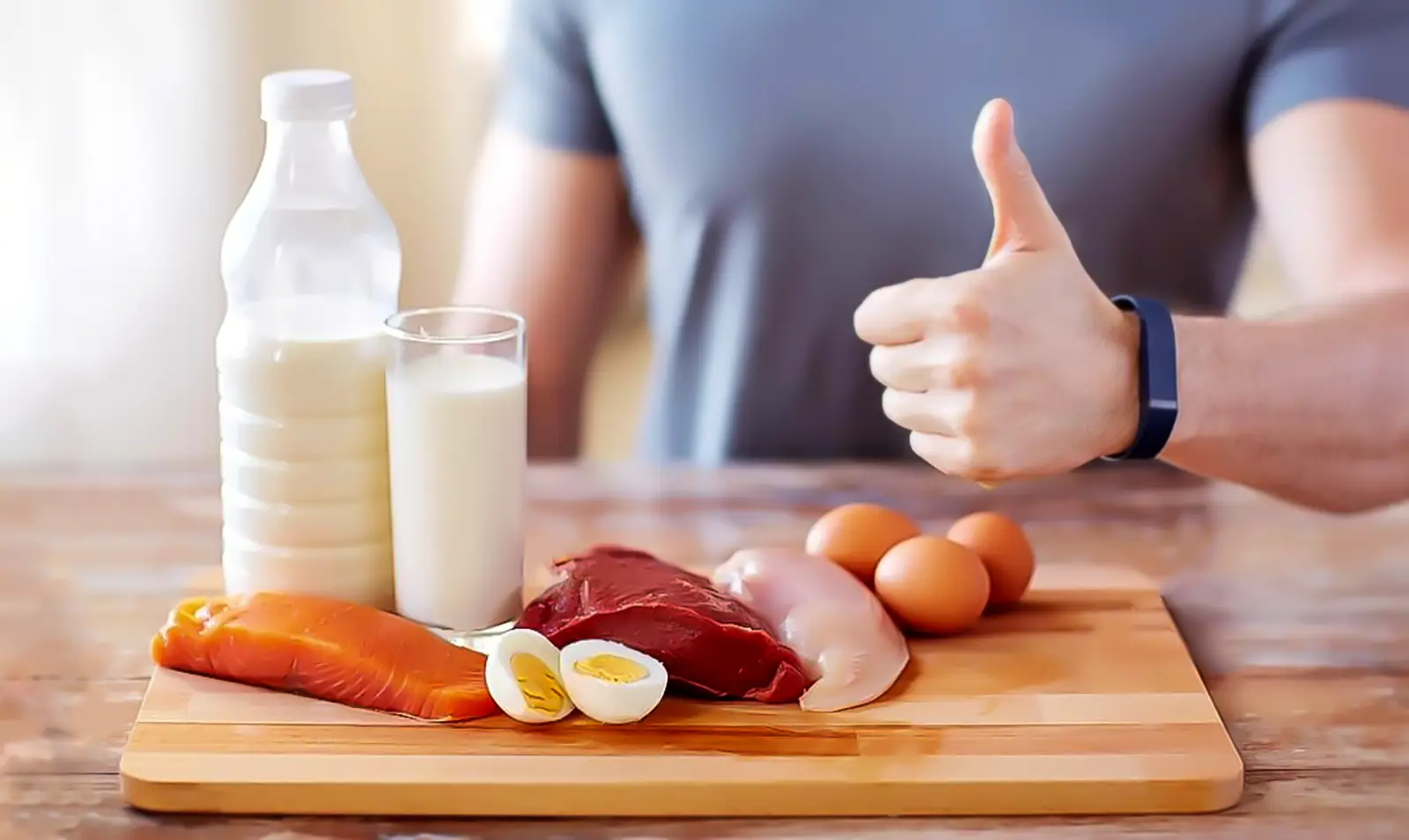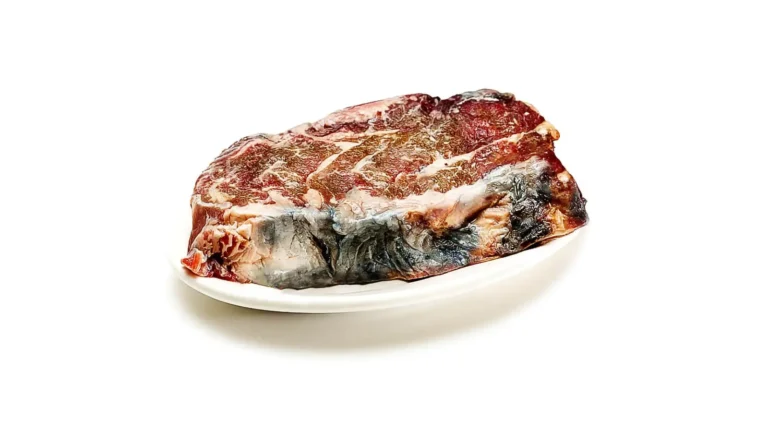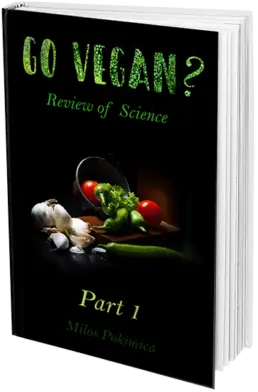人間は真の解剖学的意味で雑食動物なのでしょうか? 植物と肉食の種では、消化管の働きに根本的な違いがあります。
ミロス ポキミカ
によって書かれた: ミロス ポキミカ
医学的に検証した結果 Xiùying Wáng, M.D. 博士。
Updated 6月 9, 2023人間の健康的な食事とは何ですか? 人間は雑食動物であり、肉を食べるために生まれてきたのでしょうか?
医師、他の専門家、そして社会通念は皆、動物性食品が健康的な食事に必要な要素であり、人間は雑食動物であることに同意しています。大多数の人も、人間は雑食動物であると信じています。人間は常に動物性食品を食べてきたと主張する人もいます。その結果、それらは自然で健康でなければなりません。
The majority of us today, or let’s say 99 percent are behavioral (we are not anatomical) omnivores but even this is false. Do you feel tempted to stop and snack on dead animals on the side of the road? Do you fantasize about slaughtering cows with your bare hands and eating them raw? If you answered “no” to these questions, you’re not even a behavioral omnivore. Chimpanzees are more behavioral omnivores even than us. In some cases, chimpanzees will actually kill and eat other monkeys and animals raw.
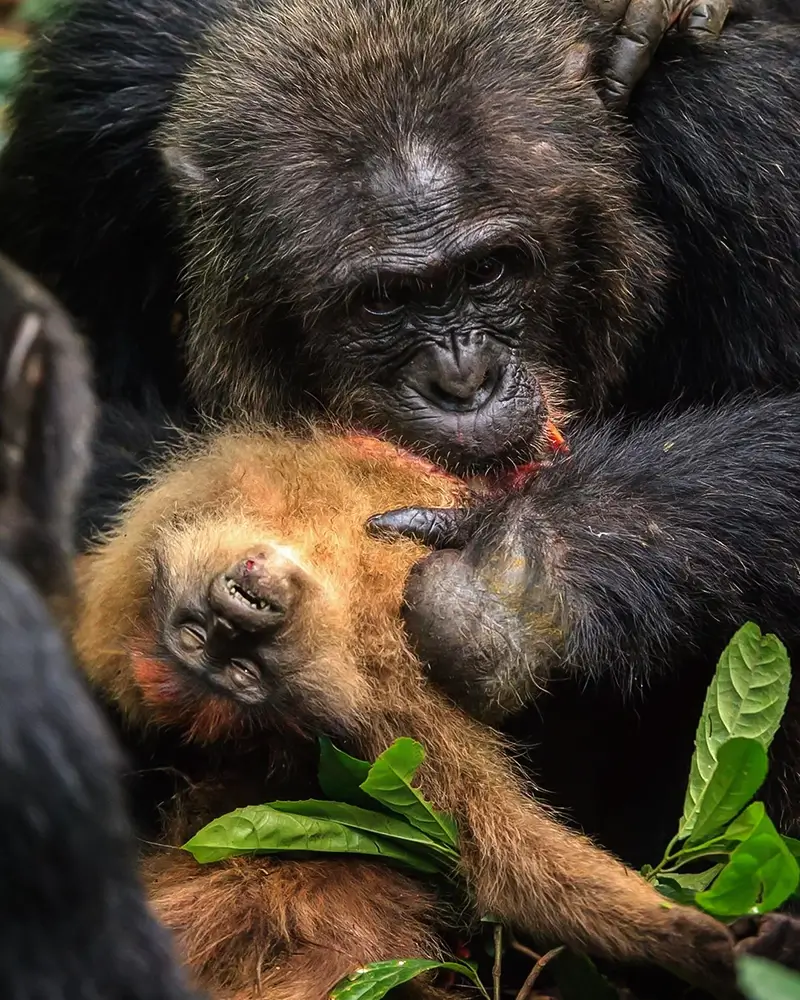
Despite the fact that many humans eat both plants and meat, earning us the dubious title of “omnivore,” we are anatomically herbivorous.
動物性食品が私たちにとって最適な食べ物ではないにもかかわらず、人間が動物性食品を摂取する理由は数多くありますが、だからといって人間が雑食動物になるわけではありません。たとえば、元の人々は北に移住する際、適切な植物製品が入手できなかったため、生き残るために動物製品を頻繁に食べていました。これにより、彼らはチンパンジーと同じカテゴリーに分類され、行動的な雑食動物にすぎなくなります。
また、動物性食品を消費することに対する大きな文化的圧力もあります。多くの人が彼らと一緒に成長しました。宗教は、神が人間が使用したり食べたりするために動物を創造したと頻繁に主張します。米国によると 食事ガイドライン, 動物性食品は健康的な食事の一部です。食品会社は、動物性食品が健康であると主張する偏った研究結果を頻繁に発表します。医師はこれらの食品は健康に良いとよく教えられます。
最近まで、肉のために動物に餌を与え、育て、屠殺する余裕があったのは裕福な人々だけであり、残りの人口は主に植物性食品を食べていました。その結果、20世紀以前は、裕福な人だけが心臓病や肥満などの病気に日常的に悩まされていました。合成肥料の発見のおかげで、動物の肉が比較的安価で広く入手できるようになったために(肉を1カロリー作るのにでんぷんから7カロリーが必要)、心臓病、脳卒中、癌、糖尿病、肥満などの致死性の病気が世界に蔓延しました。あらゆる社会経済的背景を持つ人々。アジアやアフリカの開発が遅れている地域では、西洋的なライフスタイルが広がるにつれて、肉中心の食事に関連する病気で人々が苦しみ、死亡し始めています。動物性タンパク質を摂取しても、人間が自動的に雑食になるわけではありません。
What people don’t realize is that animal protein can be digested and utilized by all herbivores. Not just humans. Humans, as intelligent, higher life forms, have the ability to change our behavior and diet. However, just because we can survive or enjoy eating animal products does not imply that they are optimal, healthy foods for humans.
解剖学は、信念や食べ物の好みを含むすべてのものよりも優先されます。解剖学的特徴は観察可能な事実です。これらは、私たちや他の生き物がどのような種類の食物を消費し、それによって繁栄するように進化してきたかを客観的に示しています。肉食動物、雑食動物、草食動物の解剖学的特徴を比較することにより、以下の議論は人間が草食動物であることを示しています(イェーツほか、2021).
人間は真の解剖学的意味で雑食動物なのでしょうか? 植物を食べる種と肉を食べる種の消化管の仕組みには根本的な違いがあります。このタイプの肉食バクテリアは非常に攻撃的であり、プロバイオティックではないため、肉食種の結腸にはバクテリアが存在しません。肉食動物の消化管を通過する食物の移動時間は短く、5 ~ 10 時間以内である必要があり、そうでないと結腸内で肉が腐り始めると免疫系に過剰なストレスがかかる可能性があります。そうなると炎症を起こして食中毒を起こしてしまいます。また、肉食動物の胃酸は非常に腐食性が高く、上部消化管は基本的に無菌です。
肉食動物と雑食動物の大腸 (結腸) は、その唯一の目的が塩分と水分を吸収することであるため、単純で非常に短いです。小腸とほぼ同じ幅を持っているため、予備として機能する能力は限られています。肉食動物の結腸には微生物が依然として大量に存在していますが、その活動は本質的に腐敗です。
草食動物の大腸は、水と電解質の吸収、ビタミンの生成、植物繊維の発酵に関与する高度に専門化された器官です。草食動物の結腸は常に小腸よりも充実しており、比較的長く、善玉菌で満たされています。人間の結腸のマイクロバイオームは、体の正常な機能に重要な役割を果たしています。
どういうわけか私たちは結腸の重要性を過小評価しており、結腸は単なる老廃物器官であると考えています。肉食動物ではそうですが、私たちではそうではありません。ホモ・サピエンスや他の霊長類では、結腸はさまざまな機能を受けています。たとえば、水と電解質の吸収、ビタミンの生成と吸収などです。また、繊維の大規模な細菌発酵もあり、その結果、さまざまな代謝産物や短鎖脂肪酸が結腸から生成および吸収され、多量のエネルギーやその他の健康上の利点も得られます。草食動物のように繊維のエネルギー値全体を利用することはできませんが、その一部を利用することはできます。人間の結腸内で発酵と代謝産物の吸収がどの程度行われているかは、最近になって研究され始めたばかりです。マイクロバイオームの研究は、これらの細菌が分泌するあらゆる化学物質と、それらが私たちの体に及ぼす影響を考えると、新たな重要なことです。プロバイオティクス細菌が作り出すのはビタミンだけではありません。すべての化学物質は、薬物の可能性の 1 つです。
マイクロバイオームの構成は、私たちが食べる食べ物によって異なります。あるタイプは繊維を発酵させ、別のタイプは肉を腐敗させますが、それらすべてがプロバイオティクスであるわけではありません。
こう考えてみると、たとえば細菌が豆を腐敗させ、その結果としてガスが発生したとしても、それは私たちにとってあまり関心がありません。私たちは彼女の食べ物ではありません。細菌は豆だけを好みます。細菌は、高度に特殊化された生物です。彼らはすべてを食べるわけではありません。あるタイプは繊維を食べ、別のタイプは肉を食べます。それもあなたのことを好きですが、別の意味で。あなたは彼女のホストであり、あなたは彼女にすべての食べ物と湿気と暖かさのある住む場所を与え、彼女はあなたを好きであるため、あなたが長生きするのを助けるかもしれませんが、別の意味で、彼女はあなたの肉が好きではありません。
しかし、死体を腐敗させる細菌が存在する場合、私たちもメニューに加わります。肉は肉、私たちのもおいしいです。ほとんどの人は、私たちの免疫システムの約 60 ~ 70% が、実際には GALT (腸管関連リンパ組織) と呼ばれる広大なリンパネットワークのシステムとして腹部に存在していることを認識していません。
さらに、主に免疫グロブリン A (IgA) を持つ細胞である形質細胞の約 80% が GALT に存在します。私たちの体内には、私たち自身の DNA よりも、細菌や他の共生微生物からの外来 DNA の方が多く含まれています。肉食動物では酸性のため、上部消化管の大部分が無菌状態です。食物が結腸に到達すると、外敵は存在しません。また、すでに存在する結腸微生物叢のほとんどの種は「優れた」ものです。肉を食べるときは状況が異なります。人間の消化管は、酸性度が低く通過時間が長い草食性の食事と一致する解剖学的変化を特徴としているため、非共生細菌の攻撃的な株が増殖する可能性は現実的であり、それらが食品中に存在すると腸内壁に定着する可能性があります。そして私たちの免疫システムに常に存在する原因となります。プロバイオティック細菌と非プロバイオティック細菌のいわゆるバランスが保たれる理由はこのためです。私たちは常に、体と共生していないマイクロバイオームの大部分を持っています。肉を食べると、この非共生細菌の大量の餌となる。動物性食品の多量と繊維質の摂取量の少なさは、単に通過時間の増加や便秘と関連しているわけではありません。また、低レベルの慢性炎症の増加や結腸がんのリスクとも関連しています。
When we consume meat it will be sitting in our colon for a long time and because we are not adapted to eating meat and animal products in higher amounts that will have negative effects and that is just how it is. Taking probiotic supplements won’t change anything in real numbers because bacteria multiply very rapidly when there is an energy source. If bacteria eat meat and meat stays in our digestive tract for days the end result is inflammation. If we over-consume animal products at regular intervals we would have a bad microbiome in our colon and a chronic rise in inflammation.
本物の雑食動物の消化管で何が起こっているのか疑問に思う人もいるかもしれません。実際の解剖学的雑食動物の結腸は短いのでしょうか、それとも長いのでしょうか?また、食物繊維を発酵させているのでしょうか?肉食動物の腹部組成は草食動物の適応よりも原始的であり、死んだ肉のバクテリアを殺すために酸性度が高くなります。したがって、雑食動物は、草食食に対する胃腸管の適応を示す肉食動物であることが予想されます。これはまさに、アライグマ、クマ、およびイヌ科の一部の動物で私たちが発見した状況です。たとえばクマは主に草食動物で、食事の 70 ~ 80% が植物性食品で構成されています。クマは食事に大量の肉を含むため、獲物を捕らえて殺すことができる解剖学的特徴を維持する必要があります。したがって、クマは上顎の構造、筋肉組織、そして、食事のほとんどが植物性食品で構成されているにもかかわらず、獲物を殺したり解体したりするのに必要な力を加えることができる歯列を備えています。クマの草食食への最も重要な適応は、歯の改造です。クマは、肉食動物の切歯、大きな犬歯、小臼歯の毛を刈る部分を保持していました。しかし、大臼歯は正方形で、潰して磨くために丸い尖頭が付いていました。彼らは依然として酸性度が高く、抵抗性の高いフィルターと短いコロンを持っています。彼らは繊維質の植物を消化できないため、高度に選択的です。彼らの食事は主に香りのよいハーブ、塊茎、ベリー類が中心です。多くの科学者は、クマが冬眠する理由は、北方の寒い冬には主な食料(多肉植物)が入手できないためであると考えています。
参考文献:
- アルムガム、M.、レイズ、J.、ペルティエ、E.、ル・パスリエ、D.、ヤマダ、T.、メンデ、DR、フェルナンデス、GR、タップ、J.、ブリュール、T.、バトー、JM、ベルタラン、 M.、Borruel、N.、Casellas、F.、Fernandez、L.、Gautier、L.、Hansen、T.、服部、M.、林、T.、Kleerebezem、M.、黒川、K.、.. . ボーク、P. (2011)。ヒト腸内微生物叢のエンテロタイプ。 自然, 473(7346)、174–180。 https://doi.org/10.1038/nature09944
- ムーア、WE、ムーア、LH (1995)。結腸がんのリスクが高い集団の腸内細菌叢。 応用微生物学および環境微生物学, 61(9)、3202–3207。 https://doi.org/10.1128/aem.61.9.3202-3207.1995
- トゥーイ、KM、コンテルノ、L.、ガスペロッティ、M.、ヴィオラ、R. (2012)。全植物性食品、ポリフェノール、および/または繊維を使用してヒトの腸内マイクロバイオームをアップレギュレートします。 農業および食品化学のジャーナル, 60(36)、8776–8782。 https://doi.org/10.1021/jf2053959
- ハカンソン、A.、モーリン、G. (2011)。腸内細菌叢と炎症。 栄養素, 3(6)、637–682。 https://doi.org/10.3390/nu3060637
- ファーガソン JF (2013)。肉を愛する微生物: ステーキを食べる細菌はアテローム性動脈硬化を促進しますか? 循環。心血管の遺伝学, 6(3)、308–309。 https://doi.org/10.1161/CIRCGENETICS.113.000213
- ヘイゼン、SL、ブラウン、JM (2014)。腸内微生物によるトリメチルアミン-N-オキシド生成のための食物源としての卵。 アメリカの臨床栄養学雑誌, 100(3)、741–743。 https://doi.org/10.3945/ajcn.114.094458
- グリック・バウアー、M.、イェー、MC (2014)。ビーガン食の健康上の利点: 腸内微生物叢の関係を探る。 栄養素, 6(11)、4822–4838。 https://doi.org/10.3390/nu6114822
- ニュージャージー州ケロー、モンタナ州コフラン、CM リード (2014)。ヒト被験者における食事性プレバイオティクスの代謝上の利点: ランダム化比較試験の系統的レビュー。 英国栄養学雑誌, 111(7)、1147–1161。 https://doi.org/10.1017/S0007114513003607
- フェロー Yates、JA、Velsko、IM、Aron、F.、Posth、C.、Hofman、CA、オースティン、RM、パーカー、CE、マン、AE、ネーゲレ、K.、アーサー、KW、アーサー、JW、バウアー、 CC、Crevecoeur、I.、Cupillard、C.、Curtis、MC、Dalén、L.、Carlos、J.、Drucker、DG、Escribano Escrivá、E.、. 。。ワーナー、C. (2021)。アフリカ人類の口腔マイクロバイオームの進化と変化する生態。 米国科学アカデミーの議事録, 118(20)、e2021655118。 https://doi.org/10.1073/pnas.2021655118
関連記事
栄養と健康について何か質問はありますか?
ぜひご意見をいただき、次回の投稿でお答えしたいと思います。皆様のご意見とご意見に感謝しており、すぐにご連絡をお待ちしております。私もあなたを招待します フォローする Facebook、Instagram、Pinterestでダイエット、栄養、健康に関するコンテンツをご覧ください。そこにコメントを残して、他の健康愛好家とつながり、あなたのヒントや経験を共有し、私たちのチームやコミュニティからサポートや励ましを得ることができます。
この投稿があなたにとって有益で楽しいものであり、学んだ洞察を生かす準備ができていることを願っている。この投稿が役に立ったと思われた方は シェアする 友人や家族など、その恩恵にあずかれるかもしれない人たちと一緒に。誰が健康の旅にガイダンスやサポートを必要としているかわからないのですから。
– あなたはおそらくそれも好きでしょう –

栄養について学ぶ
ミロス・ポキミカは、自然医学の医師、臨床栄養士、医療健康と栄養のライター、栄養科学アドバイザーです。書籍シリーズの著者 ビーガンに行きますか?科学の復習また、自然健康サイト「GoVeganWay.com」を運営している。
医療上の免責事項
GoVeganWay.com では、最新の栄養と健康関連の研究のレビューをお届けします。提供される情報は著者の個人的な意見を表すものであり、専門的な医学的アドバイス、診断、または治療に代わることを意図または暗示するものではありません。提供される情報は情報提供のみを目的としており、資格のある医師または医療提供者の相談、診断、および/または治療に代わるものとして機能することを意図したものではありません。GoVeganWay.com で読んだことや GoVeganWay.com を通じてアクセスしたことを理由に、専門家の医学的アドバイスを無視したり、医療治療を受けるのを遅らせたりしないでください。
認可された医師に相談する前に、GoVeganWay.com で読んだ内容の結果としてライフスタイルの変更や変更を決して適用しないでください。
医療上の緊急事態が発生した場合は、直ちに医師または 911 に電話してください。GoVeganWay.com は、内部で言及されている特定のグループ、組織、検査、医師、製品、手順、意見、またはその他の情報を推奨または承認しません。
編集者のおすすめ –
ミロス・ポキミカは、自然医学の医師、臨床栄養士、医療健康と栄養のライター、栄養科学アドバイザーです。書籍シリーズの著者 ビーガンに行きますか?科学の復習また、自然健康サイト「GoVeganWay.com」を運営している。
最新記事 -
プラントベースのニュース
-
Vegan Marathoner To Run Length Of UK For His 60th Birthday
on 7月 1, 2025
-
These Easy Plant-Based Enchiladas Are Oil-Free
on 7月 1, 2025
-
‘This Is Our Most Popular Vegan Salad After 20 Years In Business’
on 7月 1, 2025
-
Plant-Based Foods ‘More Viable’ Option Than Insect-Based For Replacing Meat
on 7月 1, 2025
-
Texas Has Become The Seventh US State To Ban Cultivated Meat Sales
on 6月 30, 2025
-
Vegan Feta And Corn Salad
on 6月 30, 2025
-
Sunflower Meal Is A ‘Promising’ New Protein Base For Meat Alternatives, Says Study
on 6月 30, 2025
トップヘルスニュース — ScienceDaily
- Scientists just mapped how the body rejects pig organs—and how to stop iton 7月 1, 2025
Scientists have achieved an unprecedented look into how the human immune system attacks a transplanted pig kidney, using spatial molecular imaging to map immune activity down to the cellular level. They discovered early signs of rejection within 10 days and pinpointed key immune players—like macrophages—driving the response. Even more exciting: when targeted therapies were applied, the immune assault weakened. As U.S. clinical trials of pig kidney transplants begin, this breakthrough offers […]
- This virus infects millions—and we just discovered its secret weaponon 7月 1, 2025
Scientists have discovered a stealthy mechanism that cytomegalovirus (CMV)—the leading infectious cause of birth defects in the U.S.—uses to infiltrate blood vessel cells while evading immune detection. The virus forms a hidden protein complex that acts like a molecular “backdoor,” allowing it to bypass the immune system’s defenses. This newly identified pathway may explain why vaccine efforts have failed for decades and opens the door to targeted therapies that could finally prevent […]
- Scientists just found a sugar switch that protects your brain from Alzheimer’son 6月 30, 2025
Scientists have uncovered a surprising sugar-related mechanism inside brain cells that could transform how we fight Alzheimer’s and other dementias. It turns out neurons don’t just store sugar for fuel—they reroute it to power antioxidant defenses, but only if an enzyme called GlyP is active. When this sugar-clearing system is blocked, toxic tau protein builds up and accelerates brain degeneration.
- This AI tracks lung tumors as you breathe — and it might save liveson 6月 30, 2025
An AI system called iSeg is reshaping radiation oncology by automatically outlining lung tumors in 3D as they shift with each breath. Trained on scans from nine hospitals, the tool matched expert clinicians, flagged cancer zones some missed, and could speed up treatment planning while reducing deadly oversights.
- Ancient DNA reveals leprosy hit the Americas long before colonizationon 6月 30, 2025
Leprosy’s tale stretches from 5,000-year-old skeletons in Eurasia to a startling 4,000-year-old case in Chile, revealing that the rare strain Mycobacterium lepromatosis haunted the Americas millennia before Europeans arrived. Armed with cutting-edge ancient-DNA sleuthing, scientists have pieced together remarkably well-preserved genomes that challenge the idea of leprosy as purely a colonial import and hint that the disease may have homegrown American roots awaiting confirmation by future […]
- Scientists discover ‘off switch’ enzyme that could stop heart disease and diabeteson 6月 30, 2025
Researchers at UT Arlington have discovered a key enzyme, IDO1, that when blocked, helps immune cells regain their ability to properly process cholesterol—something that breaks down during inflammation. This breakthrough could offer a powerful new way to fight heart disease, diabetes, cancer, and more. By “turning off” this enzyme, the team restored cholesterol absorption in macrophages, potentially stopping disease at the source. Even more promising, they found a second enzyme, NOS, that […]
- Fire smoke exposure leaves toxic metals and lasting immune changeson 6月 30, 2025
Smoke from wildfires and structural fires doesn t just irritate lungs it actually changes your immune system. Harvard scientists found that even healthy people exposed to smoke showed signs of immune system activation, genetic changes tied to allergies, and even toxic metals inside their immune cells.
パブメッド、 #ビーガンダイエット –
- Blood biomarkers of Alzheimer’s disease in Australians habitually consuming various plant-based dietson 6月 30, 2025
BackgroundEvidence suggests that plant-based diets (PBDs) may be protective against neurodegenerative diseases such as Alzheimer’s disease (AD).ObjectiveThis study examined associations between blood-based AD biomarkers in individuals 30-75 years without current or diagnosed cardiovascular disease following different PBDs versus regular meat-eating diets (RMEs).MethodsThis secondary analysis of the Plant-based Diets study measured Aβ(1-42)/Aβ(1-40), p-tau181, NFL, and GFAP in 237 plasma […]
- Zinc supplementation among zinc-deficient vegetarians and vegans restores antiviral interferon-α response by upregulating interferon regulatory factor 3on 6月 28, 2025
CONCLUSION: We identified zinc-dependent IRF3 expression as an essential cellular mechanism behind impaired IFNα response in zinc-deficient subjects. This may contribute to disturbed antiviral immunity and cause increased susceptibility to virus infections in vivo. Oral zinc supplementation effectively restored IRF3 and IFNα levels. Hence, nutritional interventions may become increasingly important in order to prevent health implications from micronutrient deficiencies among vegetarians and…
- Dietary Patterns and Sustainable Lifestyles: A Multicenter Study from Latin America and Spainon 6月 26, 2025
Food systems interact through multiple dimensions including food security, nutrition, and planetary health. This study aims to associate different dietary patterns with sustainable lifestyles in Latin America and Spain. This was an observational, analytical, multicenter, cross-sectional survey study, with a total of 6412 participants. A self-administered questionnaire was developed in an online format in the Google Docs interface. The questionnaire was divided into sections: (1) […]
- Micronutrient intake and nutritional status in 16-to-24-year-olds adhering to vegan, lacto-ovo-vegetarian, pescatarian or omnivorous diets in Swedenon 6月 26, 2025
CONCLUSION: Youth, regardless of dietary practice, need support to ensure adequate micronutrient intakes, particularly for vitamin D and selenium. Further research is required to evaluate iodine nutrition in Swedish youth.
- Integrating comparative genomics and risk classification by assessing virulence, antimicrobial resistance, and plasmid spread in microbial communities with gSpreadCompon 6月 26, 2025
CONCLUSIONS: The gSpreadComp workflow aims to facilitate hypothesis generation for targeted experimental validations by the identification of concerning resistant hotspots in complex microbial datasets. Our study raises attention to a more thorough study of the critical role of diet in microbial community dynamics and the spread of AMR. This research underscores the importance of integrating genomic data into public health strategies to combat AMR. The gSpreadComp workflow is available at…
ランダムな投稿 –
おすすめの投稿 -

PubMed の最新情報、 #植物ベースの食事 –
- Blood biomarkers of Alzheimer’s disease in Australians habitually consuming various plant-based dietsby Shaun Eslick on 6月 30, 2025
BackgroundEvidence suggests that plant-based diets (PBDs) may be protective against neurodegenerative diseases such as Alzheimer’s disease (AD).ObjectiveThis study examined associations between blood-based AD biomarkers in individuals 30-75 years without current or diagnosed cardiovascular disease following different PBDs versus regular meat-eating diets (RMEs).MethodsThis secondary analysis of the Plant-based Diets study measured Aβ(1-42)/Aβ(1-40), p-tau181, NFL, and GFAP in 237 plasma […]
- Association of plant-based diets with subclinical cardiovascular disease in U.S. adults, 1999-2004by Audrey Ting on 6月 30, 2025
CONCLUSION: Higher adherence to a healthy plant-based diet was inversely associated with elevated cTnI and higher adherence to an unhealthy plant-based diet was positively associated with elevated cTnI in a nationally representative sample of U.S. adults. Supporting access to and adoption of healthy plant-based diets may be a useful strategy for promoting population-level cardiovascular health.
- Metaproteomics-based stable isotope fingerprinting links intestinal bacteria to their carbon source and captures diet-induced substrate switchingby Angie Mordant on 6月 29, 2025
Diet has strong impacts on the composition and function of the gut microbiota with implications for host health. Therefore, it is critical to identify the dietary components that support growth of specific microorganisms in vivo. We used protein-based stable isotope fingerprinting (Protein-SIF) to link microbial species in gut microbiota to their carbon sources by measuring each microorganism’s natural 13C content (δ13C) and matching it to the 13C content of available substrates. We fed…
- Prevalence and socio-economic disparities in vegetarianism and flexitarianism over 15 years: the Dutch Lifelines Cohortby Yinjie Zhu on 6月 29, 2025
Transitioning to more plant-based diets is crucial for both planetary and human health, and ensuring an equitable transition across all socio-economic groups is also important. However, empirical evidence on the prevalence and socio-economic disparities in vegetarianism and flexitarianism over time in the same population is scarce. This study investigated this in a general Dutch adult population over 15 years. From three general assessments of the Dutch Lifelines study, 143 359 participants […]
- A Plant-Based Diet for Cardiovascular Risk Reduction in Kidney Disease with a Focus on Cardiovascular-Kidney-Metabolic Syndromeby Rachel Shi on 6月 29, 2025
Cardiovascular-kidney-metabolic (CKM) syndrome is a complex disorder involving an interplay of metabolic risk factors such as obesity, type 2 diabetes mellitus, hyperlipidemia, hypertension, and chronic kidney disease. Because these risk factors augment the risk for cardiovascular complications, healthy nutrition in CKM syndrome is crucial. In particular, a healthy plant-based diet is effective in improving metabolic dysfunction through weight loss, enhancing glucose and blood pressure […]
- Zinc supplementation among zinc-deficient vegetarians and vegans restores antiviral interferon-α response by upregulating interferon regulatory factor 3by Fynn Vallboehmer on 6月 28, 2025
CONCLUSION: We identified zinc-dependent IRF3 expression as an essential cellular mechanism behind impaired IFNα response in zinc-deficient subjects. This may contribute to disturbed antiviral immunity and cause increased susceptibility to virus infections in vivo. Oral zinc supplementation effectively restored IRF3 and IFNα levels. Hence, nutritional interventions may become increasingly important in order to prevent health implications from micronutrient deficiencies among vegetarians and…
